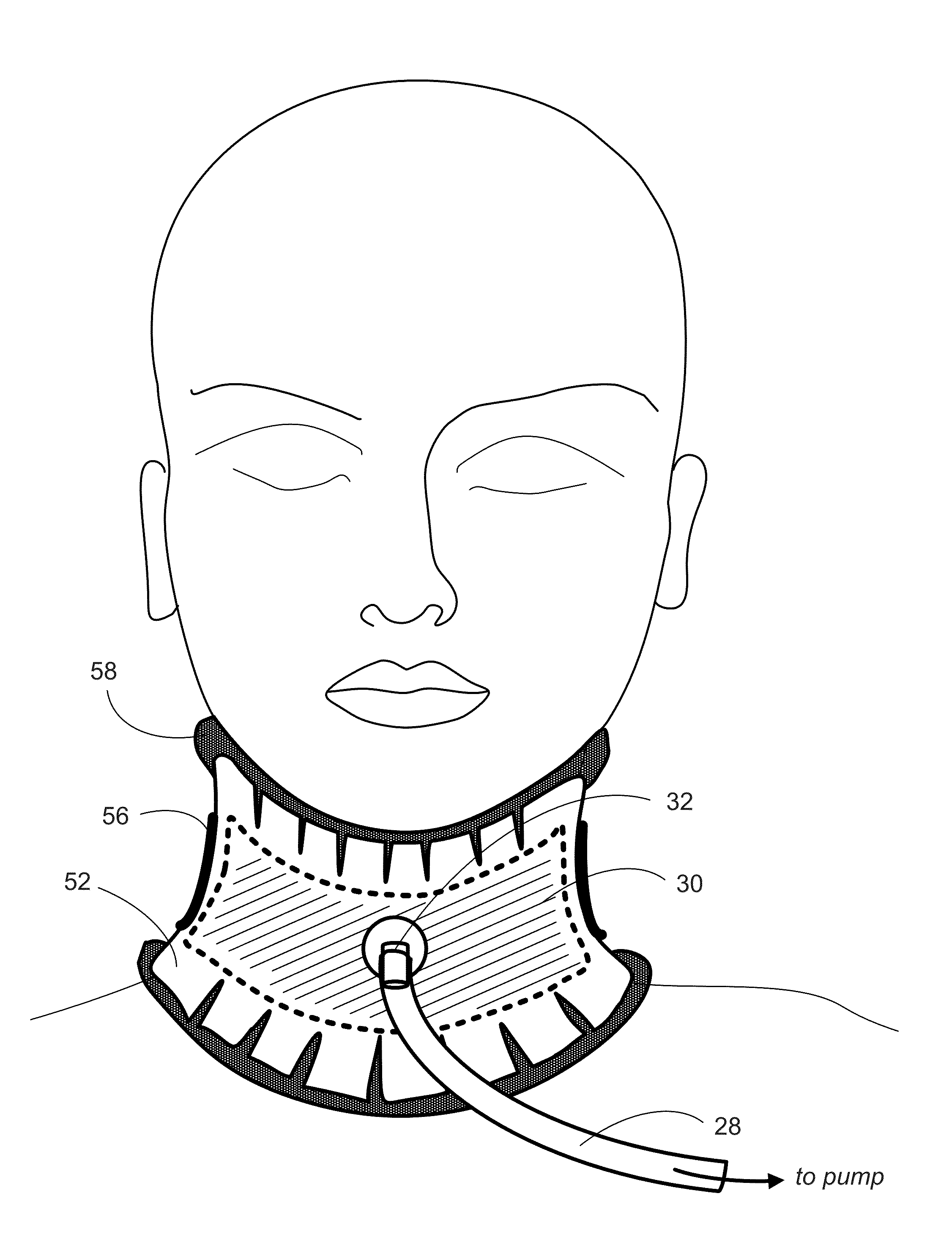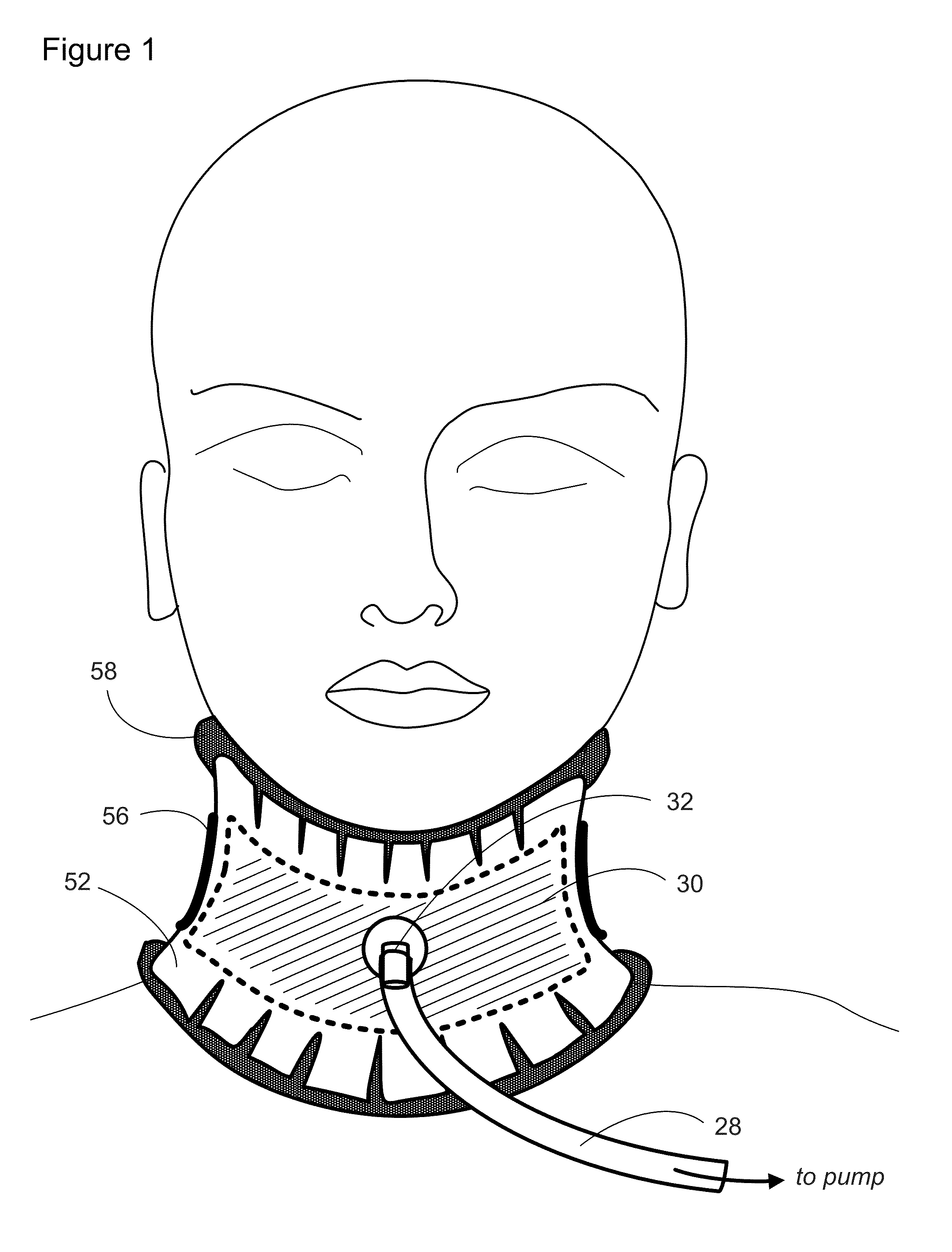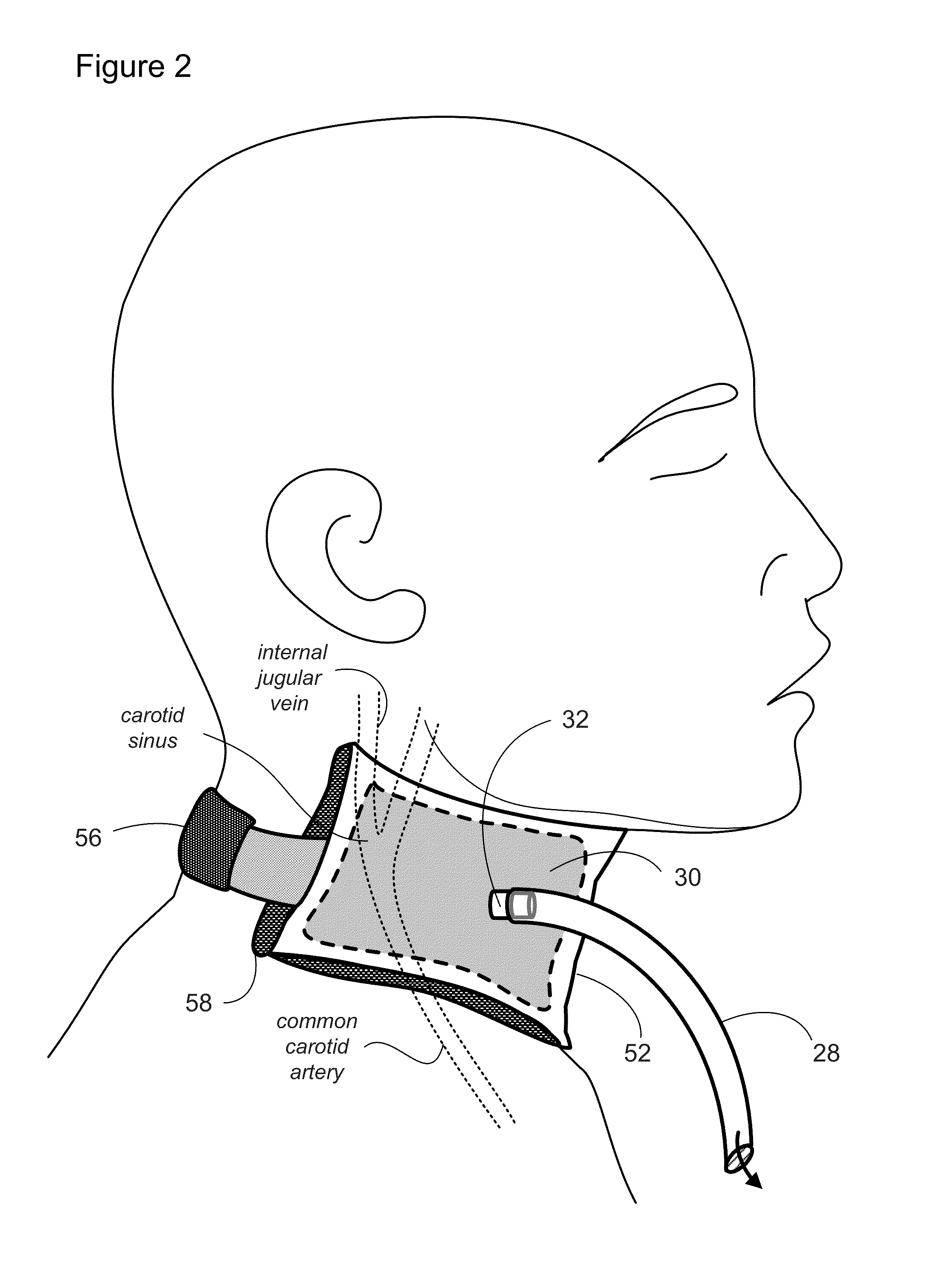Methods and apparatus for lowering intracranial and intraspinal cord pressure
a technology of applied in the field of methods and apparatus for lowering intracranial and intraspinal cord pressure, can solve the problems of significant elevation of intracranial pressure (icp), reduced cerebral perfusion pressure, and considered mission-critical, and achieve the effect of reducing intracranial pressure and reducing intracranial pressur
- Summary
- Abstract
- Description
- Claims
- Application Information
AI Technical Summary
Benefits of technology
Problems solved by technology
Method used
Image
Examples
example 1
Negative Pressure Applied to Decrease ICP
[0029]In one embodiment as depicted in FIG. 1, a negative pressure ICP modulation device is provided wherein a soft flexible seal material or gasket 58 attached along the edge of a shell 52 that forms a seal against the front and a portion of the sides of the patient's neck. The shell is sufficiently rigid to resist collapse upon application of negative pressure and the shell and seal together create a pressure controllable space between the neck and the shell. The negative pressure device is held in place with a fastener strap 56 that wraps around the back of the patient's neck. Suction port 32 is attached to the shell for attachment with a suction hose 28. This hose is connected to a pump. The pump sucks air out of the space 30 between the shell and neck and creates the negative pressure around the neck. The application of negative pressure may be applied constantly, cycled based on the patient's inspiration, set to cycle at a preset rate, ...
example 2
Negative Pressure System in a Tracheotomy Collar
[0033]In another embodiment, depicted in FIG. 3, the inventors' negative pressure concept is applied to situations where the patient has an existing tracheotomy or is reasonably anticipated to need a tracheotomy in the future, in particular with head / spinal cord trauma patients at the scene of an accident to prevent increased ICP, which would damage the brain or spinal cord.
[0034]Tracheotomy cervical collar 10 includes a central collar opening 50 for a tracheotomy such as for example a Philadelphia® brand tracheotomy collar. A Philadelphia® brand tracheotomy collar will typically feature a relatively large central collar opening 50 over the trachea for quick access to carotid pulse monitoring and emergency tracheotomy if needed. As depicted in FIG. 3, a tracheotomy collar according to one embodiment disclosed herein includes one or more negative pressure chambers 30. Negative pressure may be provided via a single chamber with a central...
example 3
Negative Pressure System Implemented Regionally to Reduce ICP
[0037]In another embodiment, a negative pressure device is adapted and dimensioned for placement around a region of the body. In one embodiment the region is the lower abdomen. Cerebral venous outflow is via two systems: the vertebral venous plexus and the internal jugular veins. Vertebral venous plexus is more prominent in the upright position and internal jugular system is more prominent in the supine position.
[0038]The vertebral venous plexus is connected to the subarachnoid space along the entire length of the spinal cord and veins surrounding the brain. The vertebral venous plexus is thought to be involved in CSF reabsorption. Elevated intra-abdominal pressure (IAP) can cause elevated intracranial pressure (ICP) and reduced cerebral perfusion pressure (CPP) and is in particular a feature of life threatening Abdominal Compartment Syndrome (ACS). Solutions tested for lowering IAP in ACS have included decompressive lapar...
PUM
 Login to View More
Login to View More Abstract
Description
Claims
Application Information
 Login to View More
Login to View More - R&D
- Intellectual Property
- Life Sciences
- Materials
- Tech Scout
- Unparalleled Data Quality
- Higher Quality Content
- 60% Fewer Hallucinations
Browse by: Latest US Patents, China's latest patents, Technical Efficacy Thesaurus, Application Domain, Technology Topic, Popular Technical Reports.
© 2025 PatSnap. All rights reserved.Legal|Privacy policy|Modern Slavery Act Transparency Statement|Sitemap|About US| Contact US: help@patsnap.com



